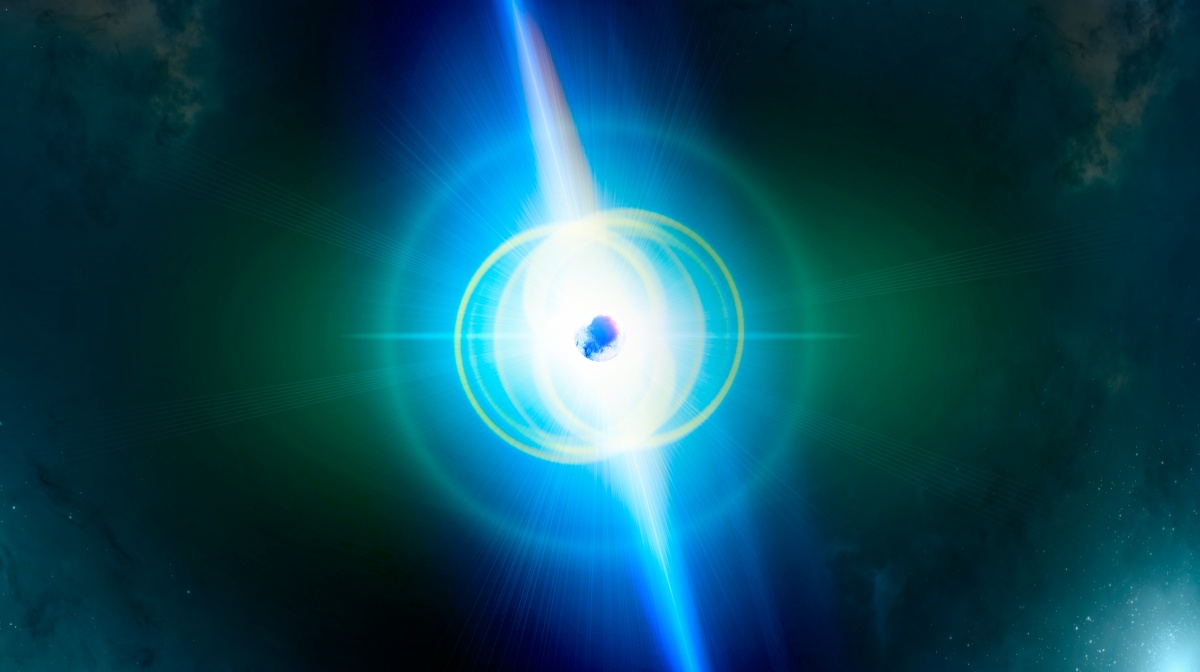Have you ever wondered what lies in the vast depths of unexplored space? Beyond the visible stars and planets we are familiar with, there is a mystery that awaits us: pulsars and neutron stars. These astronomical phenomena, as fascinating as they are enigmatic, are the protagonists of current space exploration, and in this text, we will embark on a journey to discover their secrets.
Pulsars and neutron stars, two of the densest objects in the universe, are stellar remnants that provide a unique window into the behavior of matter under extreme conditions. Yet, despite decades of study, we still have much to understand about their nature. In the space below, we'll delve into their characteristics and the role they play in the cosmos in detail.
In addition, the mysteries of pulsars will be unravelled, from their discovery in 1967 to the most recent advances in their study. These cosmic clocks, which emit beams of electromagnetic radiation with astonishing precision, challenge us to rethink our understanding of the universe and promise fascinating new discoveries in the years to come.
As for neutron stars, these celestial beacons that shine with an intense and energetic light, they will take us on a journey through the universe that is both intriguing and puzzling. Their existence, predicted by Einstein's theory of general relativity, is a testament to the beauty and complexity of the universe around us.
In conclusion, this text aims to shed light on pulsars and neutron stars, two of the most fascinating phenomena in space. Through this journey, we hope you gain a new appreciation for the vast and intriguing cosmos that surrounds us. So, get ready for a journey to the heart of the universe, a journey that will take you beyond the stars and into the exciting world of pulsars and neutron stars!
Unraveling the Mystery of Pulsars
Pulsars are neutron stars that emit beams of electromagnetic radiation at very precise intervals. Due to their extremely rapid rotation, these beams of radiation are projected in different directions in space, similar to the light of a lighthouse.

Notable Features of Pulsars
- Precise rotation: Pulsars are known for their extremely precise rotation. Some of them can even compete with atomic clocks in terms of accuracy.
- Strong magnetic fields: Pulsars possess the strongest magnetic fields in the universe. These fields are billions of times stronger than the strongest magnetic fields produced on Earth.
- Emission of radiation beams: Pulsars emit beams of electromagnetic radiation along their magnetic poles. When these beams of radiation pass by Earth, we detect them as pulses of radiation.
Neutron Stars: Progenitors of Pulsars
Neutron stars are the super-dense remnants of massive stars that have exploded as supernovae. These stars are composed almost entirely of neutrons, subatomic particles with no electrical charge.

Formation and Properties of Neutron Stars
Neutron stars form when a massive star exhausts its nuclear fuel and its core collapses under its own gravity. This collapse triggers a supernova explosion, during which most of the star is ejected into space. What remains is a neutron star.
Understanding Pulsars and Neutron Stars through Observation
Through decades of astronomical observations, we have learned a lot about neutron stars and pulsars. We have observed neutron stars both in our own galaxy and in distant galaxies. Pulsars, on the other hand, have been detected primarily in our own Milky Way, although they have also been observed in other galaxies.
Observation Techniques
To observe pulsars, astronomers use radio telescopes, which can detect the radio waves emitted by these objects. Neutron stars, on the other hand, are too small and faint to be observed directly. Instead, astronomers detect these stars through their effects on nearby celestial objects, such as binary stars.
The Importance of Pulsars and Neutron Stars in Astronomy
Pulsars and neutron stars are fundamental to our understanding of the universe. They provide a way to test physics theories under extreme conditions that cannot be recreated on Earth. They also give us clues about the life and death of stars, and the evolution of the universe.
Ultimately, pulsars and neutron stars remain a fascinating mystery. As we continue to observe and study them, we hope to unravel even more secrets of the unknown universe.
Conclusion
In conclusion, pulsars and neutron stars are intriguing and important aspects of the cosmos that challenge us to expand our frontiers of knowledge and understanding. Noted for their precise rotation, strong magnetic fields and emission of beams of radiation, these celestial bodies represent the most extreme conditions in the universe and provide us with the unique opportunity to test physical theories in a way that would not be possible on Earth.
Pulsars and neutron stars also provide valuable clues about the life and death of stars and the evolution of the universe, allowing us to shed light on some of the greatest mysteries of the cosmos.
Despite decades of astronomical observations and advances in detection technology, there is still much to learn about these fascinating celestial objects. With each new observation and discovery, we are getting one step closer to unraveling the secrets of the unknown universe. Therefore, the exploration and study of pulsars and neutron stars will continue to be a crucial area of focus in astronomy, taking us on an exciting journey into the unknown of the universe.



